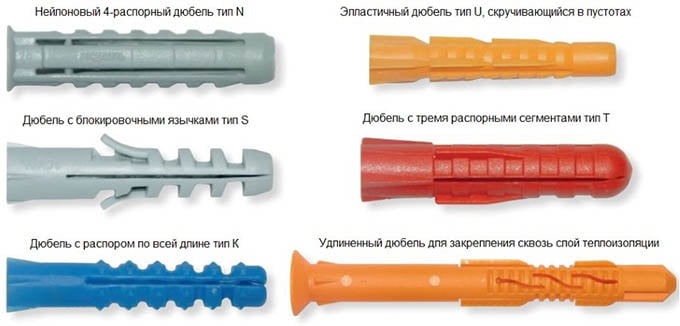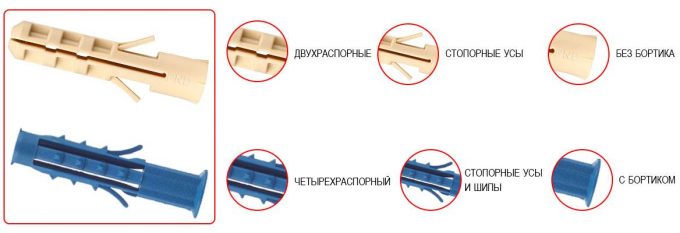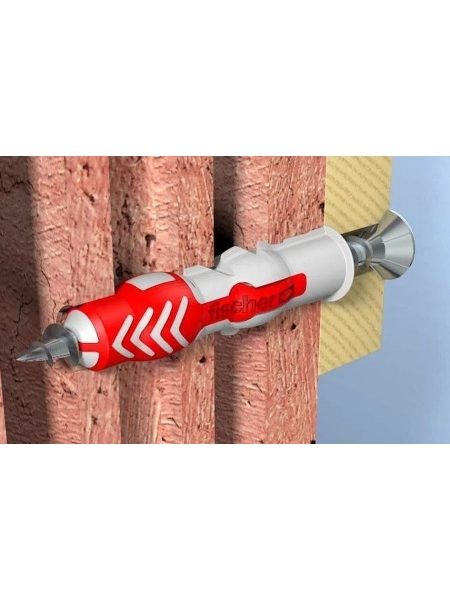The ongoing boom in construction as industrial, and suburban facilities has led to the development of new technologies in construction. As a result, the latest building materials are widely represented on the market, who demanded, respectively, and a new approach to installation. Unfortunately, despite the latest advances in building technology, many companies are trying to save on this, seemingly banal element, as fastener.
High-quality fasteners are a guarantee of reliability
Today on the market you can find a variety of types of dowels - dowel-nails, mounting dowels, etc., and all of them are designed to perform a certain type of work - mainly for connecting a wide variety of structures. there is dowel catalog which allows you to choose the right model and design, for a specific task.
Together with the dowel, a screw or anchor is used to better fix and hold the entire structure in the supporting base. The essence of the work of the dowel is based on its physical characteristics - while screwing the self-tapping screw into the wall along with the dowel, it expands, thereby firmly fixing the self-tapping screw in the wall.
should say, that such types of fasteners with the help of dowels were first used in the performance of installation and construction work of any kind and complexity many years ago, and even then this method proved to be excellent. In those days, the role of dowels was played by home-made spacers made of wood - the so-called chopiki, until the invention of plastic dowels, which were more advanced and reliable.
Application and tasks
The use of various types of dowels is possible in many areas of industry and in everyday life., it all depends on their design., and the material, from which they are made. In domestic conditions, they are most often used for frames and facades., thermal insulation materials, for installation of false ceilings, etc.. When fastening facades and frames, dowels with an elongated non-expansion part are used, Therefore, they are the best suited for this type of work..
Types of dowels for fixing heat-insulating material (polyurethane panels, mineral wool, etc.) characterized by an enlarged cuff and are used for through-hole installation.
In this way, for, to drive a screw into the wall, today hardly anyone will, like a few years ago, carve a wooden peg, to make a cork in a brick or concrete wall. After all, using suitable types of dowels for these purposes is much more reliable., more practical, and more convenient.
To date, there are a huge number of types of dowels, which is due to their use not only in solid brick or concrete bases, but also for fixing multi-hollow, layered or hollow structures.
The principles of operation of the dowel
According to the principle of operation, the dowel can be of the anchor type and expandable. Depending on the characteristics of walls and other bases, one or another type of dowels is selected. If walls or other bases are hollow, then anchor dowels are used, and if the walls are solid concrete - then expansion dowels.
The dowel is a special building element. Used together with metal fasteners for fastening to walls, ceilings and other mineral bases of structural and domestic parts and items.
Moreover, the simplest type of dowels is considered expandable - it consists of a metal or plastic cartridge, in which there are through cuts. And during the passage of a metal screw through such a cartridge, its parts are deformed, which helps to firmly hold the dowel in the wall.
As for anchor dowels, then these are more technically complex devices. In anchor dowels, the way to turn it into a reliable stopper is somewhat more complicated., than in expanding. Speaking of their device, now you can find quite a lot of different types of these devices, so you can pick them up to perform almost any installation and construction work.
Which concrete dowel is better?
The following types of dowels are suitable for concrete bases:
- dowel-nail is a classic sleeve with grooved teeth on the sides, which provides a tight grip in the hole. Hardware is driven inside the dowel;
- self-tapping dowel differs in that, that it is screwed into concrete. Due to its high strength, it has excellent bearing capacity. It is very difficult to dismantle it from a concrete base.;
- expansion dowels - when installed, the dowel expands, hammered;
- butterfly dowels - convenient for installing fasteners with thin concrete walls;
- universal dowels - this dowel is suitable for mounting on almost all monolithic surfaces;
- dowels-nails - clogged with a hammer;
- facade dowel - designed for installation of heat-insulating materials. The design is made of materials resistant to mechanical damage..

Depending on the type of dowel chosen, its fastening end can simply expand, and can become a locking bolt or turn into a thrust nut (while turning on the thread of the rod). It is worth noting, that some types of anchor-type dowels can be fully attributed to complex engineering devices, in which the main rod is fixed by opening the end of the rod by means of a spring and then turning it around the hinge.
Also today it is very often possible to meet dowels of a universal type., the design and principle of operation of which combines the possibility of using them as anchor or expanding dowels. It is very convenient to use such universal dowels for fastening objects to multi-hollow or layered bases., for installation of false ceilings, various crates and frames. In the body of such a dowel there are ring open parts, thanks to which this dowel can work as an anchor and as an expander.












